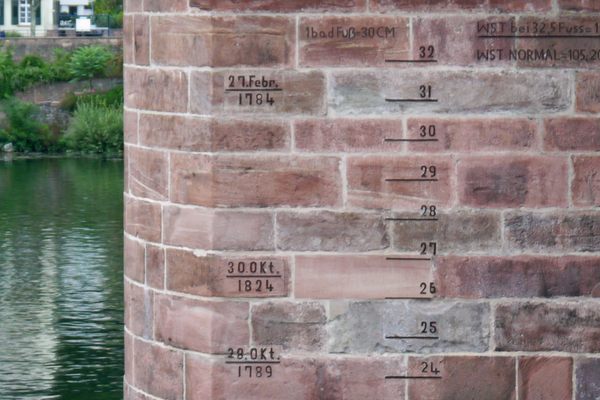About
When visiting the Leiden city hall, one finds a small staircase, seemingly leading to nothing, with a small black handle and a line etched into the wall. In fact, these three objects once had a large historical significance. The staircase was known as the shouting platform, where the mayor, duke or lawmen would announce important things or place verdicts upon convicts. The other two objects are the official standards for the old Dutch length measure, called the Rhineland Foot.
Why would you need a standard measure in a city? Because it is necessary for most professions and trade. It is very hard to trade properly without having an exact measurement that is agreed upon. A famous example is when cloth sellers would have their daughters or wives measure and cut the fabric because their thumb (inch) is shorter than that of the traders.
This standard was at first meant as a local one for the region of Rhineland, but it soon became the country's standard due to its very precise determination by the likes of Christiaan Huygens and Willebrord Snellius who used it in their work. Huygens used the unit for his pendulum clocks and Snell even expressed the first ever modern day measurement of the diameter of the earth in the unit.
At the beginning of the 17th century it, therefore, became the unofficial measurement of the country, appearing on maps far from Rhineland, it was even the official unit in most Dutch colonies like the East Indies and South Africa, stating in the official documents that anyone who wanted to compare their thumbstick to the official measure should travel to Leiden and do so. The Capetown Cape foot was, in fact, the Rhenish foot and the standard in the country until 1977.
The unit was replaced by Napoleon's meter in 1808 when France took over the country, it was briefly brought back in 1813 after the Netherlands got back their independence from France, but the people were used to the metric system by then, so the country moved back to that in 1818, bringing an end to the Rhenish foot in the Netherlands. However, the standard measure is still hanging on the city hall to this day.
The Rhenish foot is 0.314m (1.03 ft), there are 12 thumbs (inches) in a foot and 12 feet in a Rhenish Rod. The wall has a Rod etched into the wall with foot and thumb markings, there is also a metal rod that is exactly 1 Rhenish foot long.
Related Tags
Know Before You Go
The Rod is freely accessible to anyone who visits it, sometimes there are bicycles locked to the staircase and it makes it a bit harder to come close or take nice pictures.
Published
November 6, 2018





























